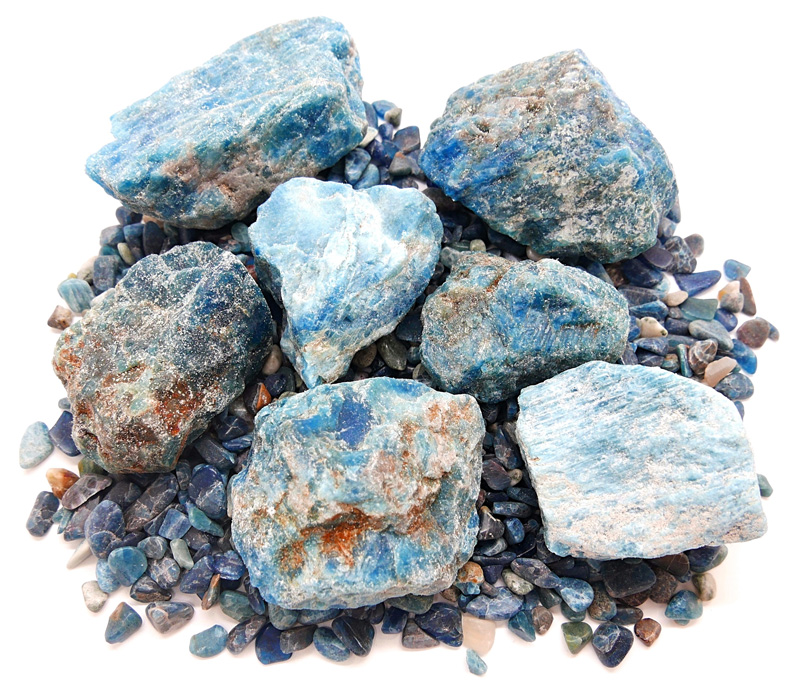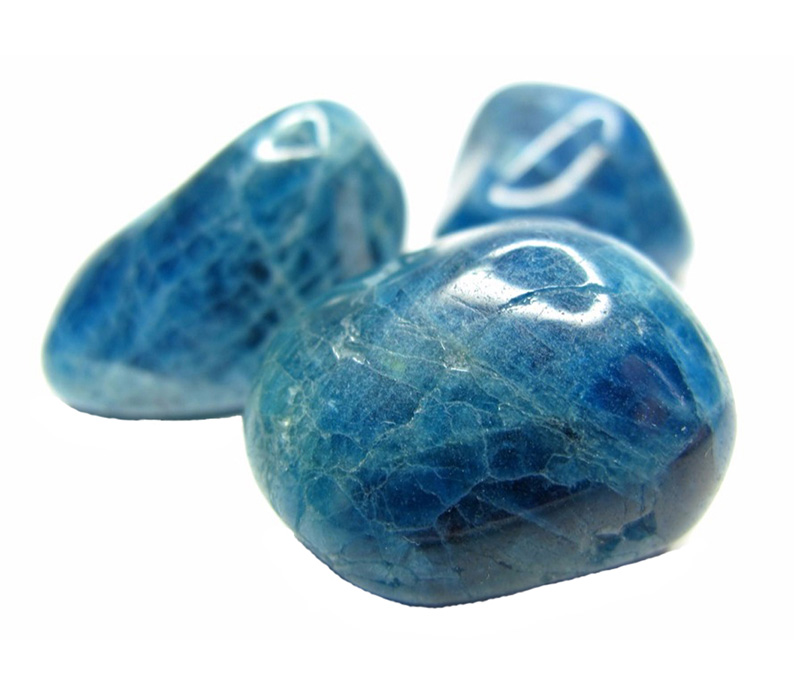

PHYSICAL PROPERTIES
- GROUP Phosphates
- COMPOSITION Ca5(PO4)3(F,OH,Cl)
- COLOR Green, blue, violet, purple, colourless, yellow or pink
- CRYSTALLINE SYSTEMHexagonal or monoclinic
- CRYSTALLINE HABIT Short or long prismatic, tabular
- HARDNESS 5
- FRACTURE From conchoidal to unequal
- EXFOLIATION Imperfect, variable
- SHINEVitreous, cerulean
- STRIP White
- TRANSPARENCY From transparent to translucent
- SPECIFIC GRAVITY 3.1 - 3.2
- REFRACTIVE INDEX 1.63 - 1.64
MINERALOGICAL CHARACTERISTICS
Apatite is a calcium phosphate of hydrothermal origin. There is a great variety of apatites, all of them with identical structures but with differences in their composition (fluorapatite, hydroxyapatite and chlorapatite). Among the most common are blue, brown, green and colorless apatite. Apatite is usually found in the form of hexagonal and tabular crystals, and also in the form of nodules or masses. The name of apatite comes from the Greek "apate", which means "deceitful", since its resemblance to other minerals such as beryl, the tourmaline and the aquamarine can lead to confusion. Due to its high content of phosphorus and phosphate, apatite is often used in the manufacture of mineral fertilizers and other items such as matches.
Deposits: Brazil, United States, Namibia, Mexico, Russia, Canada, India, Norway, Kenya, Madagascar, Myanmar, South Africa, Sri Lanka and Portugal.
THERAPEUTIC PROPERTIES
The apatite is considered a stone of openness and communication. It is usually used to enhance expression and social ease. They call it the stone of sincerity and friendship. It promotes creativity and motivation and helps to channel anger and frustration. At a curative level, it is said that it helps to strengthen the bones and teeth, and located on the thymus, it strengthens the immune system.


